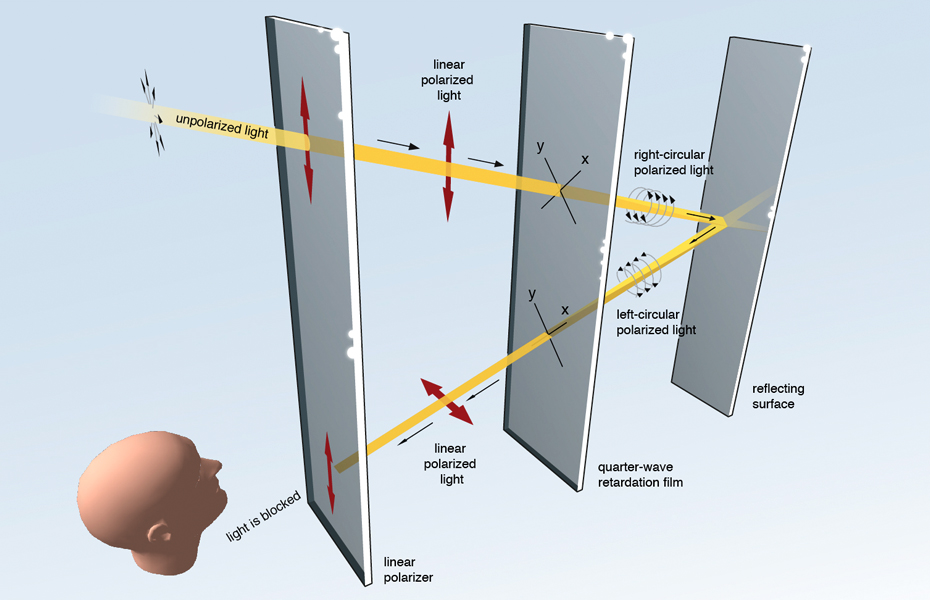The diagram below is courtesy of Nokia Conversations:

The page explains:
There’s both a linear polariser and retardation layers between the surface of your phone and the display. When light hits your screen, this is what happens:
- It hits the linear polariser, this vertically polarises the light. (Polarising means – roughly – aligning the wave vibration in a particular direction).
- Then it hits the circular polariser retardation layer. This converts the light again, making it right-circularly polarised.
- Then it hits the screen and bounces off it, switching the rotation of the light to leftist.
- It goes back through the retardation layer. When this happens, the light becomes horizontally polarised.
- Finally, it hits the linear polariser, since the light is horizontally polarised at this point it can be blocked entirely by this optical solution.
So why doesn’t the light from your phone’s display get blocked? Because it only goes through the second half of this journey so the light is unpolarised when it hits the final filter and goes through.
Good stuff, just the detail we needed.
It should also be noted that CBD isn't the only technology that aids outdoors visibility of smartphone screens - for example, a similar (though not as effective) goal was implemented on the Symbian-powered Nokia X7 by closing up the various screen layers to eliminate any air gap - this technique is used by other manufacturers, including Sony Ericsson in some of its Android smartphones.
It should also be noted that CBD is effective on both AMOLED and traditional TFT/LCD screens (the latter featured in the Lumia 710, of course).
